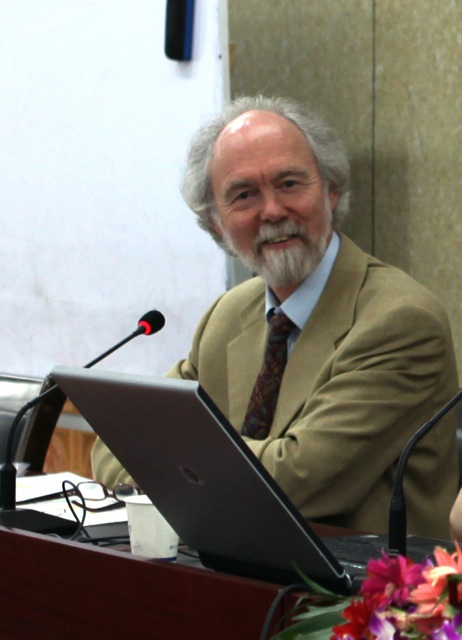主题:Confronting the History Problem in Northeast Asia:A View from Outside
时间:2015年4月28日(星期二)9:00-11:00
地点:紫金港校区 蒙民伟楼250 (Mengminwei Building 250)
时间:2015年4月30日(星期四)9:00-11:00
地点:紫金港校区 西3B-112,社会科学研究院会议室(Zijingang Campus, Xi3-B Building, Room112)
承办:国际关系前沿系列讲座由浙江大学公共管理学院政治学系组织
| | Prof. Barry Buzan 巴里·布赞教授是英国社会科学院院士、伦敦政治经济学院IDEAS高级研究员。是国际关系领域和国际安全研究界世界级权威、哥本哈根学派创始者和英国学派领军人物。曾任伦敦政治经济学院蒙塔股·伯顿国际关系教授,英国国际研究协会主席(1988-1990);(北美)国际研究协会副主席(1993-1994年);《欧洲国际关系杂志》主编(2004-2008)。 |
| 其代表作包括:《人民、国家和恐惧:国际关系中的国家安全难题》(1983年)、《安全:一种分析的新框架》(1998年,与奥利·维弗和雅普·德·王尔德合著)、《世界历史中的国际体系:重建国际关系研究》(2000年,与理查德·利特尔合著)、《从国际社会到世界社会?》(2004年)、《国际安全研究的演化》(2009年,与琳娜·汉森合著)和 《全球转型:从十九世纪的视角反思国际关系理论》(2015)等。 | |
Confronting the History Problem in Northeast Asia:
A View from Outside
This set of two lectures provides an alternative approach to addressing the history problem between China and Japan. Its method is to construct a historical overview of Northeast Asia (NEA) that integrates the local histories with the collective global one, and provides a common normative platform for assessing who did what since 1840. It aims to open a debate within the region about the history problem by challenging the prevailing politics of blame and recrimination against others in two ways. First, the historical overview is constructed as a kind of balance sheet into which the particular disputes at the centre of the history problem can be placed into a wider context of both world historical developments and systematic normative judgment. Second, in the context of this balance sheet, all the peoples concerned are invited not just to look critically at themselves as well as at others, but also to be aware of the positive contributions that others, as well as themselves, have made to the modern history of the region. The global history framework aims to put Northeast Asian history into shared context and show how while NEA has largely solved the big history problem of its dual encounter with the West and modernity, it has failed to solve the smaller, local history problem generated by that dual encounter, and both the states and peoples of the region, and the rest of the world, are paying a heavy price for that. The normative framework for assessment aims to be broadly acceptable to the peoples in NEA and consists of five goals: ridding Asia of Western imperialism/hegemony; increasing the absolute and relative wealth and power of Asian states and societies; restoring respect for Asian nations and their rightful place in international society; promoting respectful relationships with their neighbours on the basis of sovereign and racial equality; and promoting the broadly Confucian ideal of an orderly, peaceful and harmonious domestic society. The paper argues that when NEA’s history is seen through these lenses, there are no obvious heroes or villains. Instead there is a complex and densely connected joint story in which both countries (and also the West and Korea) have deeply mixed records, making positive contributions in some ways and negative ones in others. NEA’s shared story in its dual encounter is much more important than the stories of the individual countries. Perhaps not surprisingly, placing the local histories into the larger picture of the global transformation exposes many profound similarities between the structural positions and trajectories of Japan and China. These similarities might provide a foundation on which the two countries could begin to build a solution to their history problem, and so open the path towards the peaceful and stable region they both say they want.


